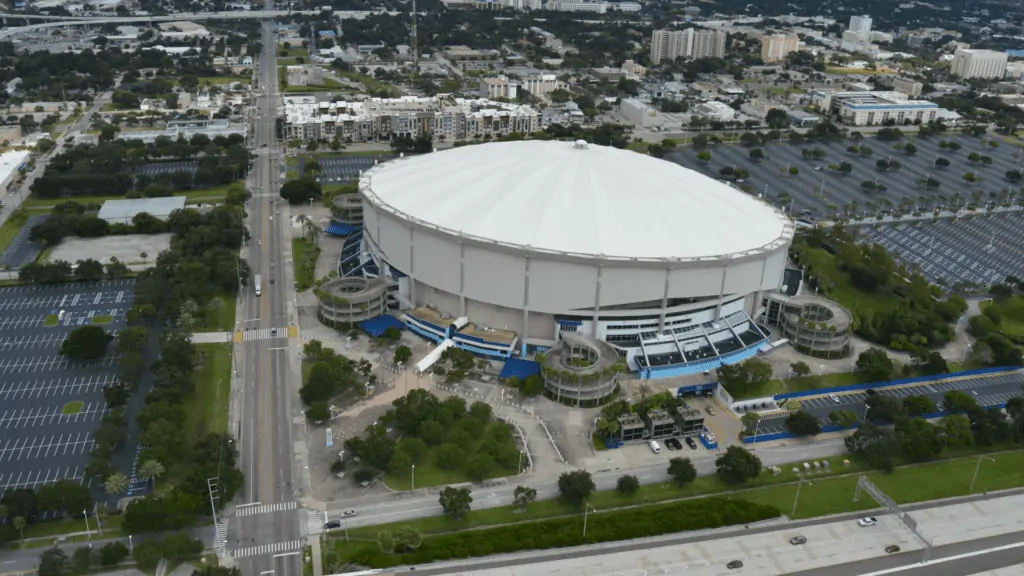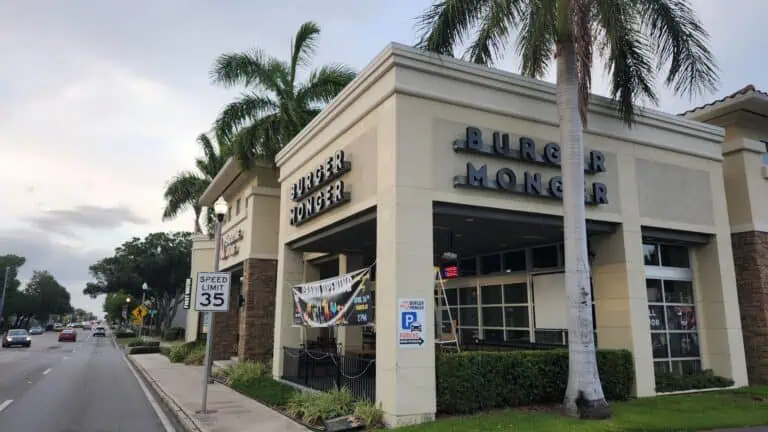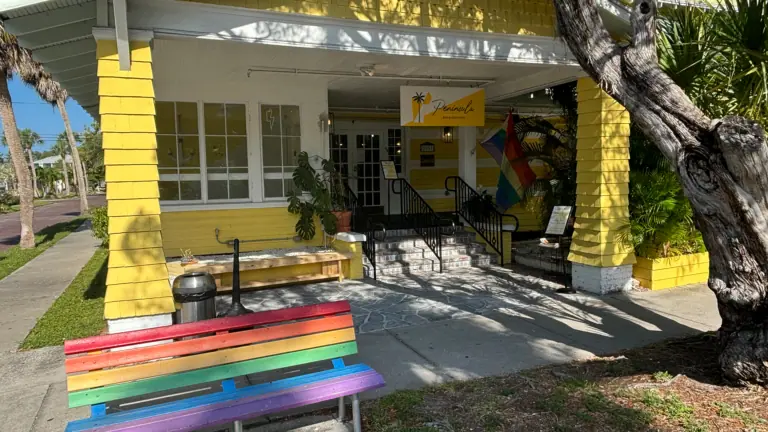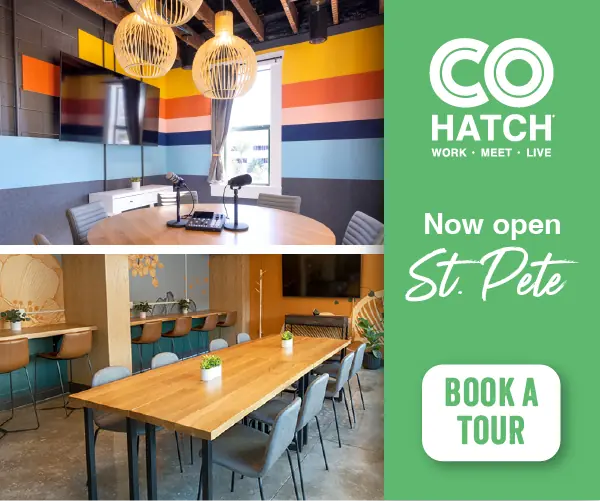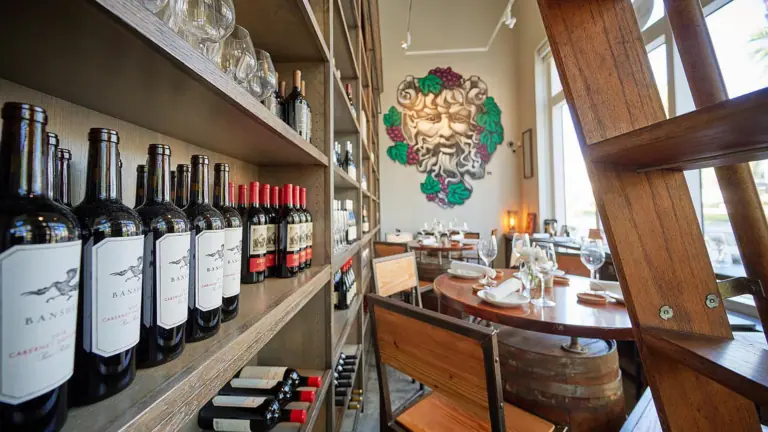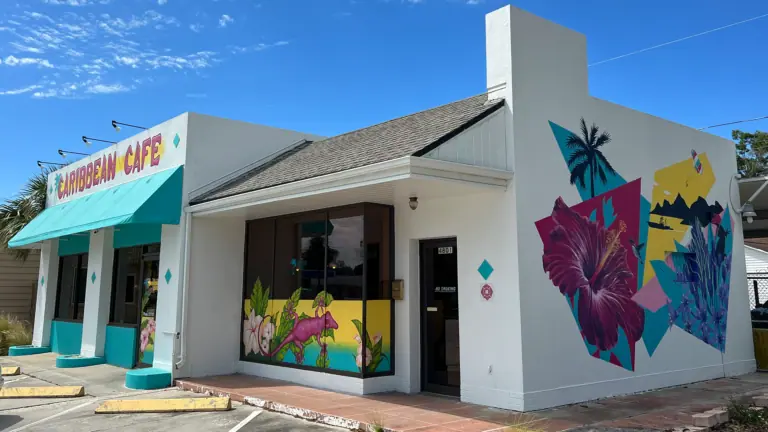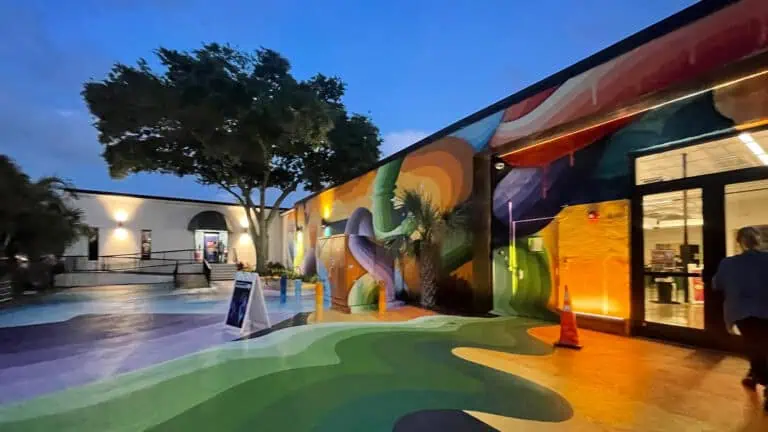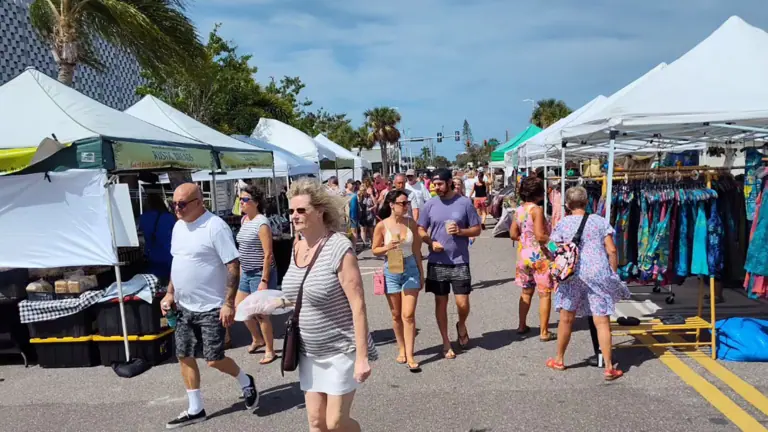Hines/Rays partnership details $50 million community investment, with affordable housing under the microscope at Gas Plant District Community Benefits Info Session
Boosters, skeptics and cautious optimists gathered on Wednesday, December 12 at the Coliseum as the City of St. Petersburg hosted the Gas Plant District Community Benefits Info Session. The event was designed to give the public an opportunity to hear how the Rays/Hines Gas Plant redevelopment plan will benefit the community—with particular emphasis on the unfulfilled promises made when Gas Plant residents and businesses were displaced 45 years ago. It also aimed to give citizens a chance to share their comments and input with the city, the development team and the non-partisan Community Benefits Advisory Council, which advises Mayor Ken Welch.
City Public Information Officer Erica Riggins introduced a panel representing the Rays/Hines group that included Rays President Brian Auld, Hines senior managing director for the Southeast Region Michael Harrison, award winning architect Everald Colas, historian Gwendolyn Reese, and President and CEO of Best Source Consulting Anddrikk Frazier. The presentation primarily focused on $50 million that is allocated for direct investment in community benefits like affordable housing, mentorship and training programs, workforce development, minority businesses, entrepreneurship, and cultural centers like the Carter G. Woodson African American Museum.
ADVERTISEMENT
Hines director Michael Harrison said, “For us this is really about creating a placemaking destination, a city within a city.” He pointed out that their initial proposal included a significant amount of affordable housing as requested in the RFP, and after meeting with the mayor’s team they increased the affordable housing component another 40 percent.
Architect Everald Colas (Storyn Studio) discussed the desire to create a complete community where “design and policy have to come together.” He described a “twenty-minute city” where essential needs would be accessible on foot, bicycle or wheelchair, describing it as “the first act of low carbon emissions because we don’t have to rely on cars.” He went on to highlight the importance of improving the quality of Booker Creek. “We understand the creek flows out to Bayboro so we want to work with Tampa Baywatch,” and noted that the banks of Booker Creek will be part of 14 acres of green space for the public to enjoy “without a baseball ticket or a hotel reservation.”
What St. Pete citizens can expect to see

As for what residents can expect to see first, Anddrikk Fraser noted that the opening phase will focus on the area east of Booker Creek. He said, “The first priority of development will focus east of Booker Creek with an anticipated 2028 delivery of nearly 700 residential units, including 100 units of senior affordable housing, Booker Music Hall, one full-service hotel, the Woodson African American Museum and 40,000 square feet of office and retail space.”
ADVERTISEMENT
It’s the amount of affordable housing in the project that brought out skeptical voices during the public comment period.
Phyllis Young grew up at 1743 5th Avenue South in what was then the Gas Plant neighborhood. “I would like to request of the city that those houses that are ‘affordable’ be at 80% AMI (adjusted median income) as opposed to market value which would be about 120% AMI. I’m very interested in what happens with this project because I’m invested. This is my neighborhood. This is where I grew up. It’s where my family grew up. I would love to see an affordability factor built in.”
Robin Davidov expressed concern that the developer has until 2030 to fulfill the affordable housing targets and can pay a penalty if the goal isn’t met, adding, “The term affordable means different things to different people.”
Dr. Basha Jordan Jr., grandson of Elder Jordan, who was a beloved businessman, community leader and philanthropist a century ago, said, “It has been noted that African Americans were the first, and the greatest number of individuals who have been displaced. African American businesses were the ones who were displaced or closed. African American families were the ones who were divided. So when this project is all said and done, everyone should be able to look at this and say African Americans are the ones who have benefited from this, more than anyone else. Promises were made. Promises were broken.”
Dylan Dames of Faith of Florida echoed the words of many speakers who talked about the effect that rising rents and home prices have had on workers when he asked the group to “take one more swing at affordable housing.”
Gas Plant natives express cautious optimism
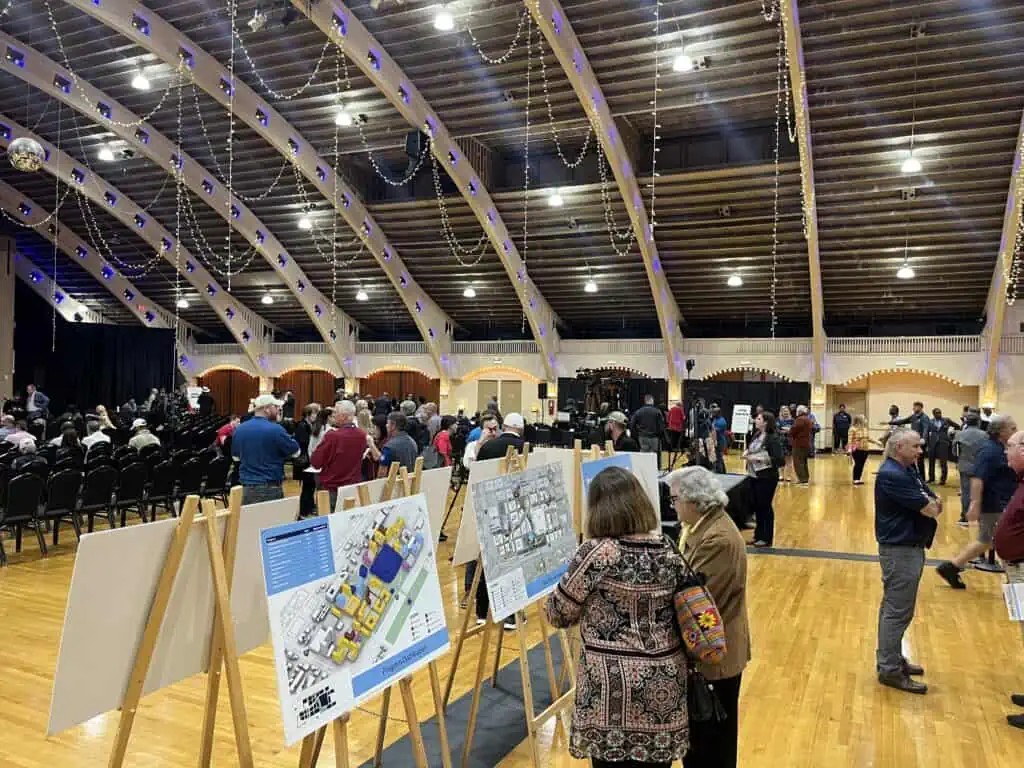
The project also had supporters with reasons to be optimistic. Kenneth Mack is a Gas Plant native who lived in both Houston and Dallas where he witnessed the benefits that modern football and baseball stadium developments can have on surrounding communities. “Businesses need to position themselves to take advantage of the opportunities. It can help. It can revitalize these areas. We’ve got to give it a chance to do that.”
Jay Ferguson and Brian Nathan both spoke on behalf of trade unions expressing concerns that the project does not state how it plans to adhere to city ordinances stipulating that major construction projects meet minimum thresholds of 15% of hours of work performed by union apprentices. Ferguson noted that the city of Tampa uses software to track compliance with the law.
Chamber of Commerce CEO Chris Steinocher expressed his support for the development, and concern for what a delay might mean for the city’s hopes for the Gas Plant district. “If we don’t do this deal because we’re looking for a better deal, I’m not sure when, and how, and what that would look like.” In response to those who think the city should push harder to get the highest value for the land, while also addressing the housing concerns, he said, “There have been great cases made about getting more for the land. People who are going to pay more for the land aren’t going to build affordable housing. They are going to build more of what they want.”
Rays President Brian Auld has been the face of much of the Rays’ efforts to assemble a plan that satisfies multiple interests in the community. He said, “There is nothing of this scope and ambition going on in the country, probably in the world. It is a project unequaled anywhere. We have the opportunity together, and I mean together, everyone in this room and the city, to show how a public-private partnership can fulfill past promises unkept. Can promote racial and social equity. Can address the housing crisis. Can demonstrate the need for climate-sensitive building. The Rays have done so much of which I’m proud over many years here. But assembling this team to take on this project is the thing that I find most impressive. We know that we will not be perfect. But we will give everything that we have. Together we believe that we can accomplish something truly special here.”
There will be additional opportunities to share feedback with the Community Benefits Advisory Council at four meetings in January (each Tuesday beginning January 9). Visit https://www.stpete.org/government/boards___committees/cbac.php for detail. Online submissions will also be accepted through December 31 at www.stpete.org/gasplant.
The full Community Benefit Impact Report can be viewed here.
More details on the Gas Plant redevelopment can be found here.
ADVERTISEMENT






